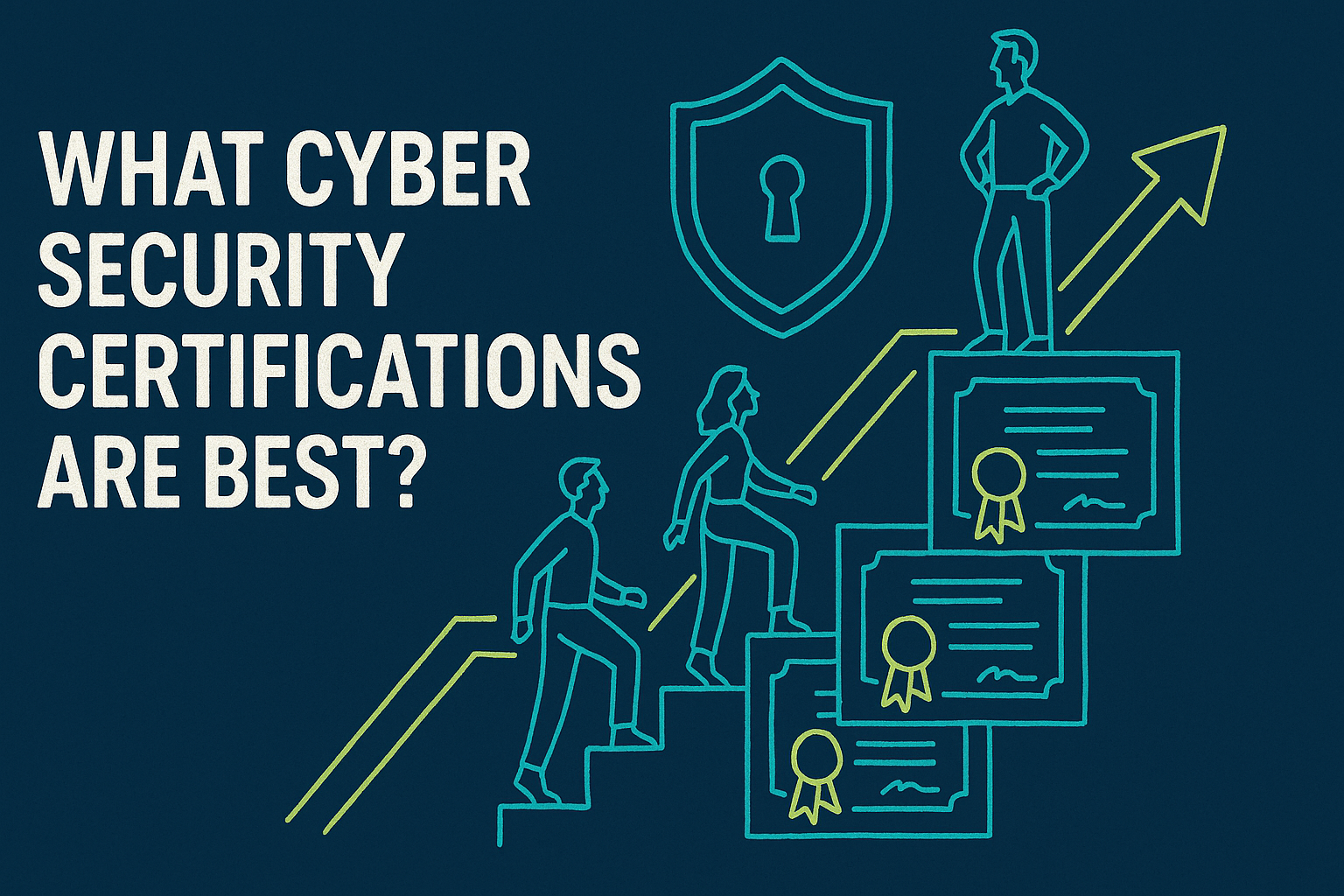What Cyber Security Certifications Are Best?
Choose CISSP if you expect to lead technical security operations and architecture; pick CISM when your role is heavier on governance, risk and incident management. The biggest earners often hold both. Learn why (and how to plan the sequence) below.
Free resource: Grab The Ultimate Guide to Cyber Security Leadership Certifications and map your fastest path from analyst to leader.
Download the Guide →
Why This Decision Matters in 2025
Hiring filters: Cyberseek shows CISSP as the most-requested cert in U.S. security job ads; CISM demand is growing inside GRC, audit and BISO postings.
Salary upside:
CISSP North-America average: $147,757 base ISC2
CISM U.S. average: $140 K–$155 K base with total comp around $165 K Infosec InstituteTraining Camp
Leader credibility: CISSP owners now top 175,000 worldwide ISC2, so the initials are widely recognized by boards; CISM’s governance focus lines up perfectly with SEC and ISO 27001 oversight duties.
Side-by-Side Snapshot
CISSP
Issuer: ISC2
Primary Focus: Security architecture, engineering & operations
Typical Roles: SOC manager, security architect, director of security engineering
Exam Format: Computer-adaptive 125–175 Qs in 4 hrs (English)
Prerequisites: 5 yrs across 2 of 8 domains (1 yr waived for degree/SSCP/CC, etc.)
Average U.S. Salary: $147.8 K base
Renewal: 120 CPEs / 3 yrs + $125
CISM
Issuer: ISACA
Primary Focus: Governance, risk & incident management
Typical Roles: Information security manager, BISO, GRC lead
Exam Format: 150 Qs in 4 hrs (fixed)
Prerequisites: 5 yrs infosec + 3 yrs management in ≥3 CISM domains (experience waiver options)
Average U.S. Salary: $140–155 K base
Renewal: 120 CPEs / 3 yrs + $85
TL;DR
Pick CISSP when you need to speak packets and architecture with engineers and explain risk to execs.
Pick CISM when you’ll own policy, risk registers and budget presentations.
Get both if you aim for CISO/BISO. Stacked credentials cover the whole NIST CSF.
When CISSP Wins
Tech-heavy environments (cloud migrations, zero-trust rollouts).
Roles that manage engineers and design security architecture.
Job ads that list “CISSP required/preferred.” A search across Fortune 500 postings in July 2025 showed CISSP mentioned 3× more than CISM.
Leadership Edge
CISSP’s eight domains force you to learn risk, architecture and software security, so you can defend budgets in cross-functional meetings.
When CISM Wins
GRC-centric positions (policy, compliance, risk treatment).
Industries with heavy audit pressure: finance, healthcare, critical infrastructure.
Executive liaison roles like BISO, where translating tech risk into business risk is the day job.
Leadership Edge
CISM’s exam scenarios are manager-first: you decide which KPI to track or which playbook to activate, mirroring daily life in a security management seat.
How to Decide in 5 Steps
List target job postings → highlight “must-have” certs.
Score role alignment (architecture vs governance tasks).
Check experience clock: meeting CISSP/CISM prereqs may narrow the choice.
Estimate ROI: weigh exam + renewal fees against the salary delta above.
Plan a sequence: many leaders go Security+ → CISSP → CISM (or reverse) within 24 months.
Study & Budget Cheatsheet
CISSP
Exam fee: $749
Average study time: 120 - 160 hours
Popular study resources: ISC2 Official Study Guide, DestinationCCC Cat drills, Kelly Handerhan videos
Pass-rate rumors: 58 - 64% (unofficial)
CISM
Exam fee: $575 (member) / $760 (non-member)
Average study time: 100 – 140 hours
Popular study resources: ISACA QAE Database, Infosec Live Bootcamp, DestinationCEE domain drills
Pass-rate rumors: ~50 % (unofficial)
Skills Neither Exam Teaches (But Managers Need)
Executive storytelling: translating CVSS 9.8 into “$3 M revenue risk.”
People leadership: coaching analysts, hiring, performance reviews.
Vendor negotiation: turning a $180 K EDR renewal into $135 K + free MDR.
Develop these through real projects, mentors, and our Cyber Security Leadership Academy.
Call to Action: Map Your Certification Ladder
Ready to choose and schedule your next cert?
Frequently Asked Questions
Is CISSP harder than CISM?
CISSP covers broader technical depth and uses a computer-adaptive format; many candidates find the shifting difficulty unnerving. CISM questions are scenario-heavy but fewer domains. Difficulty really depends on your background.
Can I sit CISM before CISSP?
Yes. Experience prerequisites overlap but aren’t sequential. Some managers take CISM first because it’s cheaper and closely aligned to their day-to-day duties.
Does having both CISSP and CISM boost salary?
Salary surveys show dual-holders often exceed $180 K base in U.S. enterprise roles, reflecting broader leadership remit. Infosec Institute
Next Step
Bookmark this post for your 1:1 conversations, share it with teammates plotting their next move, and most importantly download the guide to lock in your personal certification roadmap.


